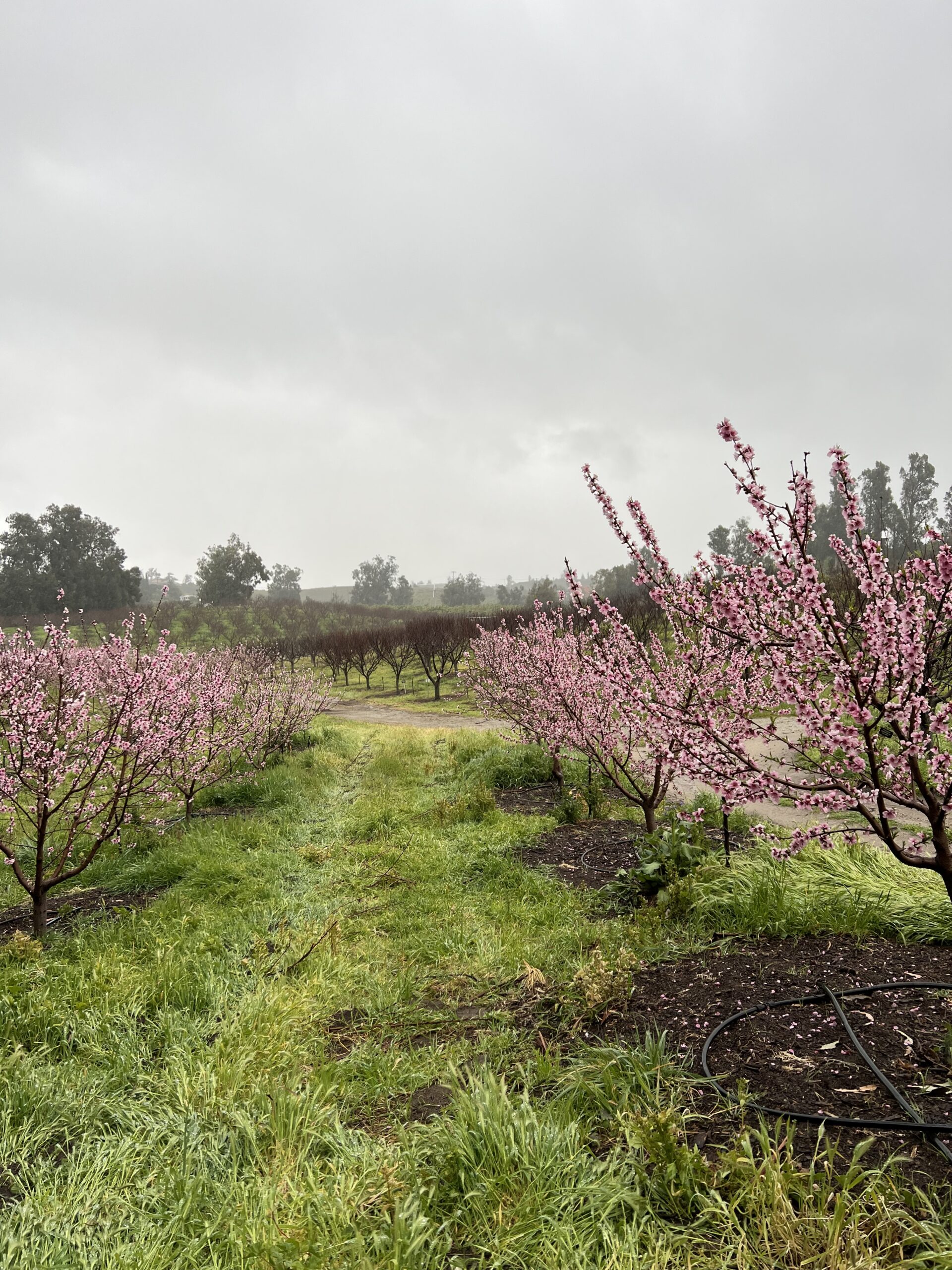
The above image was taken by Sophie Waechter-Cass at Apricot Lane Farms in late February 2023.
Predicting the weather can be a futile pursuit. Does anyone really know? Still, many people are calling for El Nino which could bring above average rainfall throughout much of the wheat belt. Over the last few weeks, many drought stricken areas have received big showers giving the chance to plant something and turn that moisture into soil cover or forage.
One of the biggest hurdles farmers have to get over when thinking about planting cover crops in dry areas after a cash crop, like wheat, is the fact that cover crops need moisture to grow. While this is certainly true, it is also true that you need living plants and roots in the ground in order to capture moisture when the rains finally do come.
This past winter, I witnessed this truth firsthand while enrolled in the apprenticeship program at Apricot Lane Farms in Southern California. When I first arrived in early October, the hillsides were brown and dormant, indicative of a hot and dry summer. I saw Apricot Lane as a lush, green oasis compared to the surrounding area which primarily consisted of avocado and lemon orchards with absolutely no ground cover and pockets of dormant coastal scrub. Initially, the amount of irrigation that was taking place to grow the cover crop in the pastures and orchards at Apricot Lane had me concerned. Was that really the best use of water in such an arid environment?
My question was clearly answered when the drought was broken with rains beginning in December and continuing with unprecedented force until March. To date, the Moorpark area has received 27.80 inches of rain in this water calendar year (Oct 1, ‘22- Sept 31, ‘23) which is 192.8% of the normal rainfall. The bulk of that rain was received December-March with one day in January receiving more than 5” of rain in 24 hours. It was on those days that we really saw the effects of living roots in improving water infiltration and the consequences of leaving soils bare and uncovered.
Receiving such a large portion of rain in such a short period of time after drought caused severe flooding and mudslides. These problems were exacerbated by the lack of vegetation and living roots on the drought stricken landscape. For weeks, roads and cities were impacted by major flooding and mudslides. Many farms suffered significant damages to crops and infrastructure.
At Apricot Lane, it was a different story. The diverse and extensive network of annual and perennial root systems allowed water to infiltrate, minimizing damage from runoff and likely replenishing the water table below. I saw that this style of farm management which emphasizes biological diversity with the goal of mimicking nature creates a built-in resiliency in the face of uncertainty, in this case, unprecedented rain after a long drought.
In this example, the water invested into cover crops was like paying for an insurance policy. There was no predicting if the rains would come but the cover crops ensured that any rain that did come was going to be captured, stored and used to grow protective vegetation. If their soils hadn’t had living roots when those rains came, they would have suffered severe soil erosion, polluting waterways and loss of precious topsoil, with no plant biomass to show for it.
While we cannot predict the rain, we can do our best to prepare by replicating nature and keeping our soils covered. By using what little moisture we have to keep plants growing, we ensure that our soils stay protected and in place with living roots ready to help water infiltrate when it does come and minimizing moisture evaporation when it doesn’t. Another thing to consider if you or neighbors have livestock is that it takes significantly less moisture to grow a forage crop than it does to grow a grain crop and after wheat is one of the most ideal times to grow a warm season forage mix.
If you have any questions about planting cover crops or forage after you harvest your wheat, feel free to contact us and we’ll get you connected with a sales representative who can help walk you through your options.